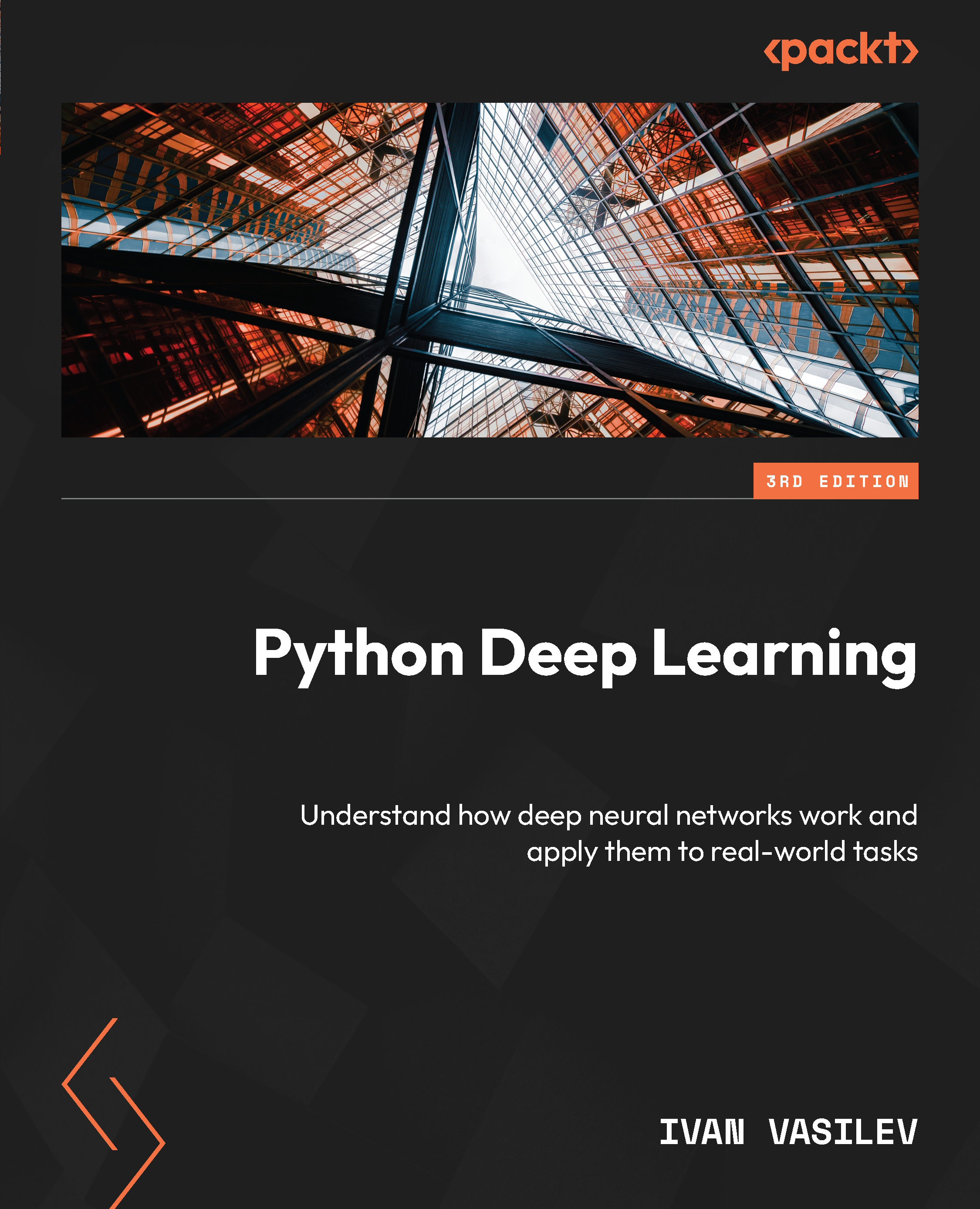-
Book Overview & Buying

-
Table Of Contents

Python Deep Learning - Third Edition
By :

Python Deep Learning
By:
Overview of this book
The field of deep learning has developed rapidly recently and today covers a broad range of applications. This makes it challenging to navigate and hard to understand without solid foundations. This book will guide you from the basics of neural networks to the state-of-the-art large language models in use today.
The first part of the book introduces the main machine learning concepts and paradigms. It covers the mathematical foundations, the structure, and the training algorithms of neural networks and dives into the essence of deep learning.
The second part of the book introduces convolutional networks for computer vision. We’ll learn how to solve image classification, object detection, instance segmentation, and image generation tasks.
The third part focuses on the attention mechanism and transformers – the core network architecture of large language models. We’ll discuss new types of advanced tasks they can solve, such as chatbots and text-to-image generation.
By the end of this book, you’ll have a thorough understanding of the inner workings of deep neural networks. You'll have the ability to develop new models and adapt existing ones to solve your tasks. You’ll also have sufficient understanding to continue your research and stay up to date with the latest advancements in the field.
Table of Contents (17 chapters)
Preface
Part 1:Introduction to Neural Networks
 Free Chapter
Free Chapter
Chapter 1: Machine Learning – an Introduction
Chapter 2: Neural Networks
Chapter 3: Deep Learning Fundamentals
Part 2: Deep Neural Networks for Computer Vision
Chapter 4: Computer Vision with Convolutional Networks
Chapter 5: Advanced Computer Vision Applications
Part 3: Natural Language Processing and Transformers
Chapter 6: Natural Language Processing and Recurrent Neural Networks
Chapter 7: The Attention Mechanism and Transformers
Chapter 8: Exploring Large Language Models in Depth
Chapter 9: Advanced Applications of Large Language Models
Part 4: Developing and Deploying Deep Neural Networks
Chapter 10: Machine Learning Operations (MLOps)
Index
